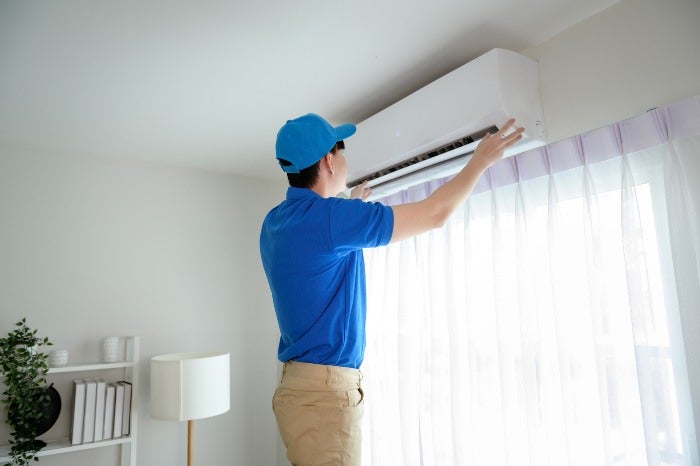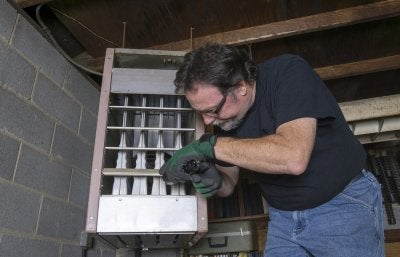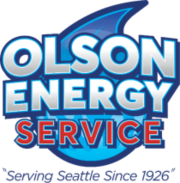-
Take care of your air conditioner during the winter
Steps to Get Your AC Unit Ready for Winter
As winter’s chill fades away and a new season emerges, it’s time to put your air conditioner back into action. Be prepared to give your HVAC system some attention this spring to ensure smooth operation all summer long. After all, air conditioning unit cost is a substantial investment, and maintaining it properly increases its lifespan and efficiency. Here are 10 steps to get your AC unit ready for spring and summer.

1. Remove the AC Cover if You Used One
Start by removing any covers or plywood boards you installed last fall to protect the outdoor AC unit from harsh winter weather. These keep snow and ice out, but turning the system on while covered could cause irreversible damage, so don’t forget this step.
2. Restore Power to Your Air Conditioner
If you turned off the power to prevent accidentally running your AC during the winter, it’s safe to restore power now that you have removed the cover. Depending on how you shut it off last winter, you’ll need to flip the wall switch near the condensing unit or restore power to the circuit breaker at the main electrical panel.
3. Clear the Area Around the Condensing Unit
The outdoor condensing unit releases the heat absorbed from your home’s interior, making it a fundamental part of the air conditioning process. To work efficiently, the condensing unit needs room to “breathe.” So clear the area around it of dead leaves, twigs, or other debris that may have collected over the winter months. Also, assess the surrounding vegetation now and throughout the summer, trimming it regularly to keep it at least 12 to 24 inches away from the unit.
4. Check for Damage
Condensing units are robust, but harsh winter weather may take its toll. Look for rust, dents, or other physical damage to the unit. Then, check the insulation wrapped around the copper piping leading from the unit through the wall. If it appears damaged, replace it before the cooling season starts in earnest.
5. Clean the Condensing Unit
On a relatively warm day, spray down the unit with your garden hose to wash away cobwebs, dirt, and other debris stuck to the metal fins. While you’re at it, straighten any bent fins with a fin comb or a butter knife. These fins facilitate heat transfer, so clearing away debris and making sure they’re straight boosts performance and lowers your energy costs.
6. Replace the Air Filter
Step back inside your home now and locate the HVAC air filter, which should be near the indoor AC unit and blower motor. When the filter becomes clogged, your air conditioner must work harder to push air through. A simple yet effective way to maintain your unit’s efficiency is to replace the filter at the onset of spring and every one to three months throughout the rest of the year.
7. Clean the Air Vents
Dust and debris on your return and supply registers can enter your HVAC system, restricting airflow and affecting indoor air quality. Use the brush attachment on your vacuum cleaner to dust the grilles and louvers. Then, ensure all your vents are open and unobstructed for the best airflow and system balance.
8. Adjust the Thermostat Settings
Switch your thermostat from heating to cooling mode and set the temperature to a comfortable level for the season. The Department of Energy (DOE) recommends setting the temperature to 78 degrees while you’re home and 85 to 88 degrees when you’re away for more than eight hours. If you have a programmable thermostat, this is a good time to revisit your settings, adapting them to your spring schedule for maximum energy savings and comfort.
9. Test the AC While the Weather is Still Mild
It’s wise to test your air conditioner before winter’s chill fades completely. This way, you have time to identify and fix any issues before you start relying heavily on your AC for indoor comfort.
10. Schedule Annual Maintenance
The final step is to schedule professional air conditioning maintenance. A trained technician will perform comprehensive checks, performing tasks beyond what a homeowner can do, such as measuring the refrigerant charge, testing for and fixing leaks, cleaning the indoor evaporator coil, and running a safety test. Regular maintenance helps prevent unexpected breakdowns, extends the life of your air conditioning unit, and boosts efficiency.
As one of Seattle’s most trusted HVAC contractors, Olson Energy Service is here to serve you. Our family-owned and operated business dates back to 1926, a testament to our legacy and commitment to customer service. During your AC maintenance visit, we’ll check all system components, diagnose underlying issues, and answer any questions you have, ensuring your air conditioner is ready to deliver comfortable, cool air all spring and summer long. To schedule your next visit with us, please call 206.782.5522 or contact us online today.
-
How Does Winter Affect Indoor Air Quality?
If you’re like most Seattle residents, winter makes you turn up the thermostat, dress in warm clothes, and reach for that extra blanket. But there’s one effect of winter that you may not have considered before—its impact on your indoor air quality . You might be surprised to learn that the cold season affects your household’s air at all, but it does. These are some of the ways in which winter weather influences the quality of your air:
More insulation means more contaminants
Most of us are more likely to notice drafts when it’s cold out, which means we’re more likely to have professional insulation installed. What you may not realize is that making it harder for warm air to escape your home also means that contaminants such as mold and bacteria are trapped inside. As a result, your indoor air quality can decrease drastically after you have your house reinsulated.
A dirty furnace can contribute to poor air quality
When you use your furnace frequently, dust, dirt, and other pollutants can get clogged in the vents. One of the best ways to ensure that your furnace continues to work efficiently—and that your air stays clean—is to change out your air filters once every 90 days or so. If you use your furnace constantly, you may want to change the filter even more frequently.
Pre-winter furnace inspections are a must
It’s important to remember that simply changing your air filters won’t keep your entire furnace clean. Having your HVAC system inspected by a professional before the start of the winter season is a good way to guarantee that your furnace is clean and that all its components are fully functional. A pre-winter furnace inspection will provide you with the assurance that you won’t have to deal with poor indoor air—not to mention a malfunctioning furnace—when the weather is cold.
-
Here’s What the Technician Checks During an Annual Furnace Inspection
The Seattle weather’s turning cold and you know what that means—it’s time to call for your annual pre-winter furnace inspection . Having your furnace checked and cleaned every year by an HVAC professional is a must if you want to guard against any midwinter breakdowns. You may be wondering, however, just what a furnace inspection entails. How essential is it? These are some of the tasks that happen during a typical furnace inspection:
Check the Wiring
If your furnace’s wiring needs to be replaced, it’s better to know that before the winter, when you’ll probably be running it regularly. An inspector can check all the wiring in your furnace and replace any of it that has become corroded or worn-out. This isn’t just important to keep your furnace running—it can also help to prevent fires.
Inspect the Vents
Without clear vents, your furnace won’t be able to keep your home comfortable when the temperature falls. In addition to making sure that there are no blocks or leaks inside your vents, an inspector can clean them out to help ensure that your indoor air stays clean and fresh. Your grills and louvers will also be checked during the inspection.
Check the Heat Exchanger
The heat exchanger is perhaps the single most important component of your heating system—after all, it’s where the air that circulates through your furnace is heated. An inspector will examine your heat exchanger to make sure that it is still in good condition, and that it hasn’t become rusted or corroded over time.
Inspect the Drainage System
Your furnace also needs a working drainage system to continue to provide you with great service. When an HVAC professional looks at your drainage system, he or she will check all the hoses, clean out the condensate drain, and replace the water in the trap.
““
-
Is It Really Necessary to Get a Pre-Winter Furnace Tune-Up?
One of the most important steps you can take to keep your HVAC system running smoothly is to have your furnace checked before the weather starts to get cold. A pre-winter furnace tune-up can help to ensure that your Seattle home stays warm and comfortable even when the temperature outside plummets. You may be wondering, though, whether this yearly investment is strictly necessary. Here are some of the advantages of having a pre-winter maintenance check for your home heating system:

You’ll need fewer repairs.
Getting a tune-up greatly reduces the chances that you’ll need to call for emergency repair for your furnace during the long winter months. Maintenance means that you’ll be able to identify and fix small issues before they have a chance to develop into larger problems. Nobody wants to end up paying for a repair that could have been avoided with a simple tune-up, so schedule the tune-up and you can avoid this issue.
You’ll avoid potential hazards.
A furnace with a problem won’t just make your home uncomfortable—it can also be dangerous. If there is a gas leak, it could put everybody in your household in jeopardy. Having your heating system checked over by a professional before the season of heavy use will help to ensure that you can use it safely.
You’ll extend the life of your furnace.
The more frequently you have your furnace checked for small problems, the less likely it is that these problems will add up to a breakdown. Annual system tune-ups help to extend the life of your furnace, sparing you the expense of a replacement.
You’ll keep your heating costs down.
The less efficiently your furnace is working, the more energy you’ll have to expend in order to keep your house warm. Investing in yearly maintenance will help to keep every component of your furnace working at top capacity, allowing you to stay comfortable without breaking your budget.
RECENT POSTS
categories
- Uncategorized
- Air Conditioner
- Fireplace Inserts
- Fireplace Insert Installation
- Air Conditioning Installations
- Air Conditioning Units
- Air Conditioner Maintenance
- HVAC Professionals
- Heat Pump Installation
- Heating and Cooling
- HVAC Unit
- Heat Pumps
- Furnace
- Furnace Service
- Tankless Water Heaters
- Water Heaters
- Energy Efficiency
- HVAC Contractors
- Olson Energy Service
- Mini-Split Systems
- Ductless Air Conditioner
